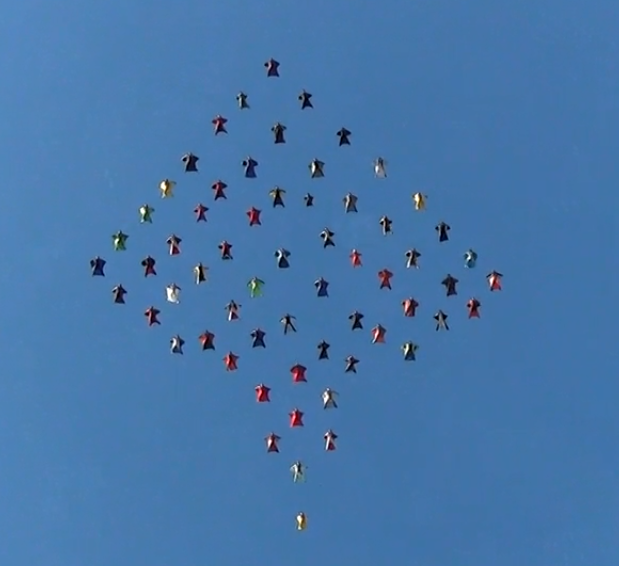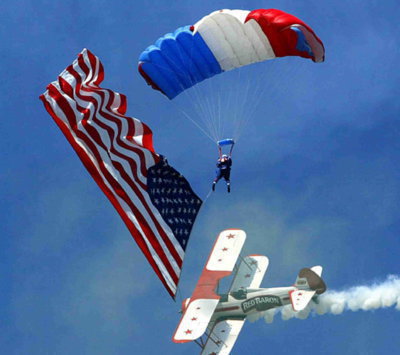Recommended Posts
QuoteI think they should have communications with the miners, to give them "hope" and at the same time, devise a way to get them water continuously.
Dont be in such a hurry to write off some humans
that communications with them in a mine disaster would be a waste.
The last time I saw someone make an "argument" like this was right after the Columbia tragedy. A whole bunch of real ignorant folks proposed a whole bunch of MacGuyver type rescues, some of which featured duct tape.
Why don't you consider the fact that the miners have unions to represent them in obtaining the safety equipment they believe they need, and that the industry is pretty well-regulated by now so that the appropriate safety precautions are in place.
With that postulated, shit happens. People die in disasters, small and large, every day.
Why are you arguing with people who actually know what they're talking about? Sometimes people just die.
rl
Bill Cole
When was I talking with those??
I have been 1 mile deep into mountain mine shafts, and have a good idea of what can and cannot be done, and what is not being done becausethe mine companies are too cheap.
Bill Cole
n23x 0
Hard riser inserts! Tons of them! wrapped around the cables! How could it NOT work.
Now, in all seriousness.
QuoteI have been 1 mile deep into mountain mine shafts, and have a good idea of what can and cannot be done...
Tin can's and string?
Sorry, this puts me in a frustrated mood. Prevention is key, and as Rhonda said above, sometimes shit just happens.
.jim
QuotePeople who know what they are talking about?????
When was I talking with those??
When you were talking with people like Remy, who unlike you has actually worked a commercial mine, and BillVon, who unlike you engineers sophisticated radio equipment for a living. Them “those.”
Blutarsky 2008. No Prisoners!
Scoop 0
Maybe a bit far fetched but it could help. Theyre not exactly that bulky either. Sure they could be stored somewhere.
Edit to add: after a quick goggle appears they might already be doing this, but more on the part of the rescuers than thinking about survivors.
http://www.rebreather.com/
billvon 3,172
> mine is cheaper than paying for dozens of funerals and a mega
> lawsuit.
And spending that money so the explosion doesn't happen in the first place saves even more lives. It's like adding a tertiary reserve to your rig because your normal reserve is a piece of crap and you can't be bothered to fix it. That's not the right approach to the problem.
sundevil777 102
Quote>Funding a decent communications system and air provisions in a
> mine is cheaper than paying for dozens of funerals and a mega
> lawsuit.
And spending that money so the explosion doesn't happen in the first place saves even more lives. It's like adding a tertiary reserve to your rig because your normal reserve is a piece of crap and you can't be bothered to fix it. That's not the right approach to the problem.
Why is it put in such either/or terms? I think that obviously both are needed (prevention and rescue capability).
At the risk of sounding like I did in a previous thread
I think analogies usually suck at explaining what people are trying to say.
If tanks of air were stationed at key locations, they would not have to be dangerous in a roof collapse scenario. If the roof fell in, and broke open a cylinder, it is probably going to be covered in the material anyway. Of course the cylinders would have the caps to protect the valve, and could be in a sturdy cabinet of sorts. It is a low tech, high reliability system, with the cost proportional to the spacing of the cylinders along the mine.
Why is it that rescuers are so incapable of having more air for themselves? The miners carry a system providing them with an hour of air, but the rescuers obviously can't get to them in an hour. That is pathetic. Why is it such a stretch of budget and imagination for rescuers to be able to carry/cart/hose/whatever more air with them as they are searching? But it would be so expensive...the money is better put toward prevention...Bullshit I say.
The earlier comment about how the mine workers union is apparently OK with the current status of rescuer capability is valid. They truly are the group that should be the advocate for miner safety and should be promoting better capability.
I am VERY surprised that so many are so willing to dismiss the need for something better.
billvon 3,172
>pieces of crap, then why not just conclude that we need to concentrate on
>making the main more reliable and stop focusing on the need for better
>reserve canopies.
That's my whole point! A tersh is a BAD way to fix a reliability problem. Fixing the main (or even the regular reserve) is a better solution.
To get back to the mine issue - almost 100 people a year are killed in mines in the US. Air tanks probably wouldn't save any of them; heck, they would have had to be enormous to save even these people. It sounds good to people after a disaster like this, just like a third parachute sounds good to whuffos after the newspaper report says "she spiralled into a parking lot when her reserve failed to open."
And hey, that tersh might do some good! After all, they can't hurt, and they might have saved that poor pregnant woman who eggshelled her face from a life of pain! Now, as skydivers we know that the primary single cause of deaths in skydiving is flying a perfectly good canopy into the ground, and that's where we should concentrate our efforts. But after a high profile accident, people who don't understand that can be tempted to clamor for a 'fix' that really doesn't help.
Similarly, if your objective is to save miner's lives, those 100 people a year who die are probably a better target than a spectactular (but rare) accident that happens twice a decade. It's very much like trying to 'solve' the problem of double malfunctions with a tersh. Sounds like the scariest possible thing to a whuffo - but it's simply not a major risk for most jumpers.
Remster 30
Quotetanks of air were stationed at key locations, they would not have to be dangerous in a roof collapse scenario.
What a great idea! In fact, its so good that its done already. All the mines I worked in (and chutelss: active mines, in operation, hoisting rock and all.. I'd give an estimate of 20 or so) had them in the lunchrooms. Maybe its not a requirement in the US under MSHA (but I would think it is), but it is in Canada, and overall, MSHA is about as if not more stringent then the various mines inspectors offices I`ve dealt with.
QuoteWhy is it such a stretch of budget and imagination for rescuers to be able to carry/cart/hose/whatever more air with them as they are searching? But it would be so expensive...the money is better put toward prevention...Bullshit I say.
Because its unpractical. How do you go up and down raises climbing ladders with all tha extra equipement? Let me tell you, hoisting a stretcher up a 100ft raise is physically demanding enough.
A hose? connected to what? the compressed air line running through the mine that has oil added to it for the jacklegs and stoppers? I dont think many rescuer would last long breathing that straight in. And by the way, those lines, well, they kinda get destroyed in an explosion / cave in.
Listen, innovation is great, and if this incident brings something new, great.
Mining is a high risk work compared to many others, mainly because of the environment we have to do it in: ie, mines. That said, the main cause of accident and deaths is pretty banal: slips and falls is the #1 cause.
UG coal mining is probably the dirtyest type of mining you can imagine, and, by its nature, probably the most dangerous: while ground presure isnt too great since its typically shallow deposits, coal dust and methane are very much present.
THATS why there are bodies like MSHA. Considering that this mine was cited several times recently for code violations, we`ll probably see something not too flattering come out of the investigation.
godfrog 2
godfrog 2
sundevil777 102
I am surprised that so many others are so willing to accept that the WV rescuer capability was OK.
drive it like you stole it and f*ck the police
Remster 30
QuotePlease continue to give us your informed opinion as more detail becomes available.
I guess you prefer opinions who slightly agree with yours...
Greg: I was a number 6 man in a Mine Rescue team (if they work kinda similarly as they do in the US vs. Canada).
Sine you`re in Nevada, kinda like me, you`re more used to hard rock mines. Coal mines as you know are a while different ball of wax.
If any of you want to learn more about mining and mine rescue:
http://www.msha.gov/MineRescue/rescue.HTM for starters
And all the info on that particular mine, including past inspection record, are public record and can be found on:
http://www.msha.gov/drs/drshome.htm
The dB seams buggy.. I had to enter "Sago Mine" as the mine name, All States, Include closed mines, All mine types.
godfrog 2
godfrog 2
sundevil777 102
QuoteI guess you prefer opinions who slightly agree with yours...
I wanted more of his opinions because he is in the industry, and because so many others don't seem to be open minded to the need for improvements.
godfrog 2
kallend 2,217
Two winters ago, what had been a mediocre safety record at West Virginia's Sago Mine grew dramatically worse. Over 23 months beginning in February 2004, two dozen miners were hurt in a string of accidents. Federal safety inspectors slapped the mine with citations 273 times, or an average of once every 2 1/2 days.
Despite this record, the price paid by Sago's operators was light. Government regulators never publicly discussed shutting down the mine and never sought criminal sanctions. The biggest single fine was $440, about 0.0004 percent of the $110 million net profit reported last year by the mine's current owner, International Coal Group Inc.
....
Large fines are rare, and the most serious sanctions -- such as closing mines -- are almost never used, documents show.
This pattern has been even more pronounced under the Bush administration, which came into office with a promise to forge cooperative ties between regulators and the mining industry. During the past five years, the number of mines referred to the Justice Department for criminal prosecution has dropped steadily, from 38 in 2000 to 12 last year.
...
Former MSHA officials and leaders of the United Mine Workers of America, which represents unionized coal miners, have accused the agency's Bush-appointed leaders of being too closely allied with the industry. They note that MSHA's first leader under President Bush, David D. Lauriski, was a former coal industry executive who advocated a less confrontational style.
Under Bush, 17 of 26 regulations proposed by the Clinton administration were dropped or withdrawn. The agency launched a series of high-profile "cooperative alliance" agreements with the industry to promote safety through education, posters and other voluntary programs.
The only sure way to survive a canopy collision is not to have one.
sundevil777 102
I don't think that a confrontational style is needed. Maybe it is, but you imply that it is obviously required.
Clearly the mine in question seems to recently had a lot of problems, but I wonder if that is generally true.
***
May be possible, but again there is a cost factor to consider, as well as a logistical one for moving the re-breathers and all the support supplies.
Pure oxygen needed for those units may be a bit hazardous in a mine environment, and the o2 isn't the only thing than needs to be changed out...the scrubber media inside the unit also needs to be changed out with each new bottle.
That and they are fairly complex units to maintain, which is costly as well.
I set up the emergency response team at a chemical milling plant...we often had to enter areas with no breathable atmosphere and do strenuous work...the top of the line re-breather units I originally purchased were more trouble, and less dependable than they were worth...
A friend on the San Diego FD emergency response squad, explained the whys and how's they never use systems like that...and I followed their example replacing out '21st' century stuff with Scott air bottles and mask regulators....better stuff, but still not practical for a long term underground stay.
~ If you choke a Smurf, what color does it turn? ~
Remster 30
Quotedoes this make sense to you?
Nope... But then again, as I said, I`m a hard rock guy, and when talking about underground operations, I`m more used to deep mines. Maybe it made sense, at the time, to the people in charge of the rescue operations.


.thumb.jpg.4bb795e2eaf21b8b300039a5e1ec7f92.jpg)





You'd be suprised at what people here are experts in, I think . . .
Share this post
Link to post
Share on other sites